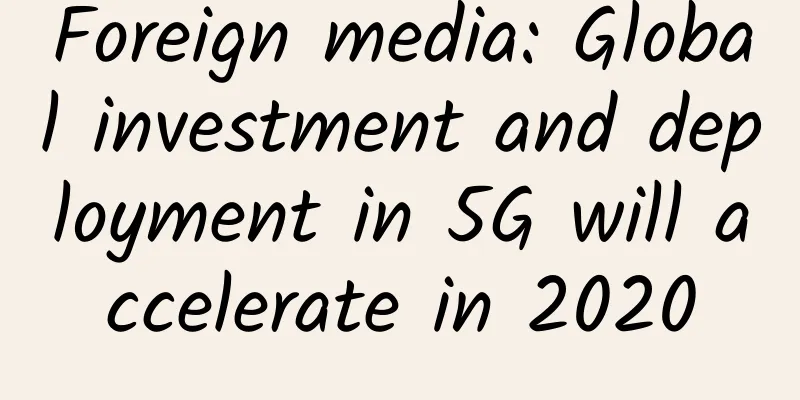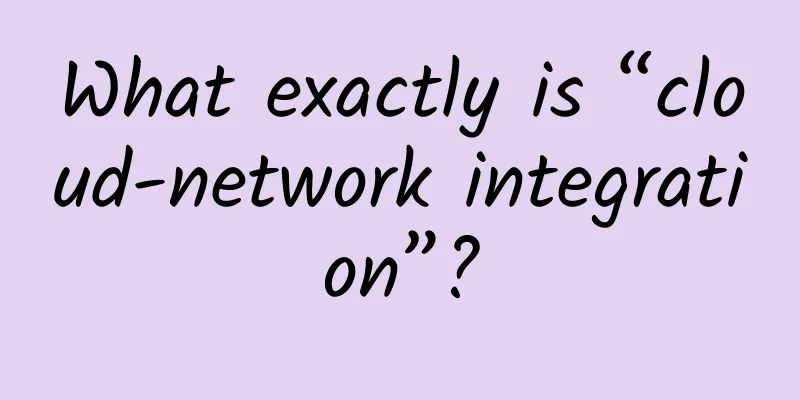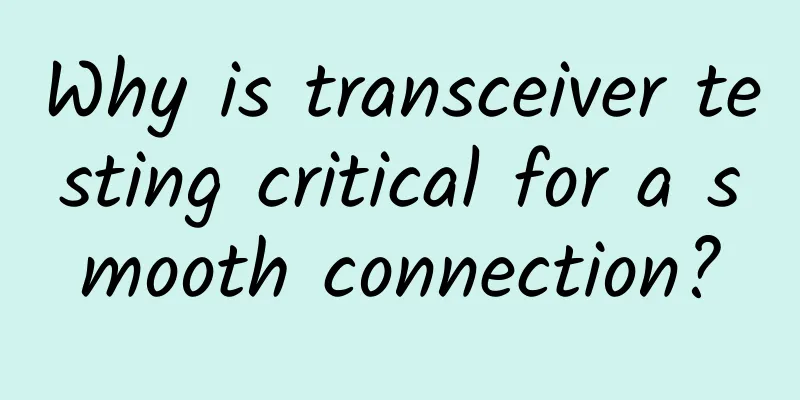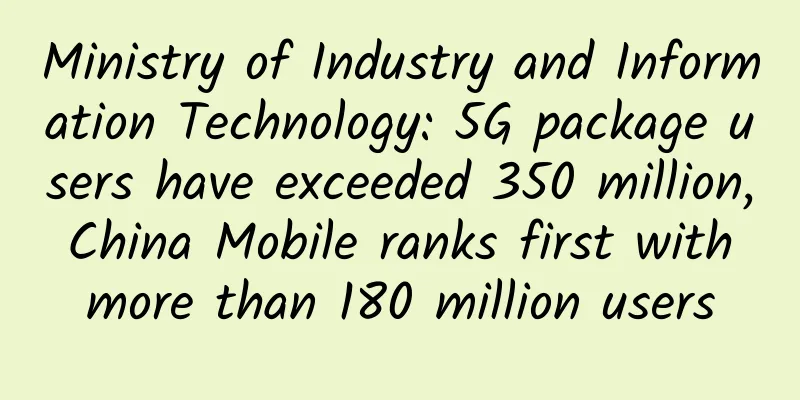There have been three waves of "network withdrawal" around the world. When will domestic operators complete the withdrawal of 2/3G networks?
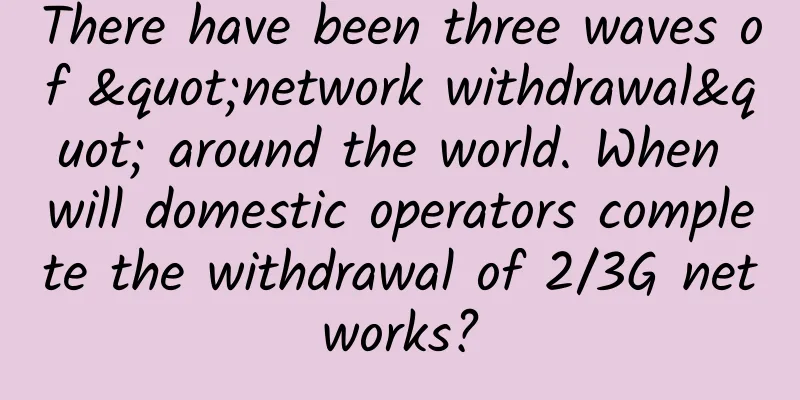
|
Recently, Ericsson released the ten-year special issue of the Ericsson Mobility Report. With the continuous expansion of global 4G and 5G networks and the corresponding capacity improvement, "service withdrawal and network withdrawal" and the shutdown of traditional technologies (i.e. 2G/3G) have become unstoppable, and the following three different waves of "network withdrawal" have appeared around the world. The first wave of “network withdrawal” mainly refers to the 2G network shutdown in parts of North America, Northeast Asia, Australia and New Zealand. This wave has already started. The next wave is the 3G network withdrawal, which is expected to be around 2025. The second wave of network withdrawal: Western Europe is more dependent on 2G, so the second wave of network withdrawal starts with the withdrawal of 3G. This trend is expected to continue until around 2025, in parallel with the withdrawal of 3G in the first wave of network withdrawal. The second step is the withdrawal of 2G, which is expected to be completed around 2030. Technologies such as spectrum sharing allow 2G to be maintained and preserved at a very "thin" level. This wave of network withdrawal also includes parts of Southeast Asia and other parts of North America. The third wave of “network withdrawal” includes areas of the world where 4G and 5G technology penetration is low, mainly in Eastern Europe, Africa, the Middle East and other parts of Southeast Asia. In these regions, 3G will still be critical for providing mobile broadband in the next few years. Both 2G and 3G may be withdrawn from service and network around 2030. The GCC countries are an exception, and their plans are between the first and second waves of “network withdrawal”. It is understood that telecom operators in many countries have started the process of clearing out 2G and 3G networks early on. Although it is said that network withdrawal is difficult, there are still advantages to starting early. Some countries have basically completed the clearance of 2G or 3G networks. In fact, looking at the global telecom operator market, the withdrawal of 2G and 3G networks is not new. On the one hand, with the accelerated deployment of 5G network commercialization, the coverage of 4G and 5G networks is becoming more and more complete, which can meet the needs of users to communicate and surf the Internet anytime and anywhere. On the other hand, 4G and 5G have incomparable advantages over 2G and 3G, especially in meeting the needs of users for network transmission when using large-bandwidth applications. What is the progress of domestic operators’ network withdrawal?In China, the three major operators have also conducted research and planning for the withdrawal of 2G and 3G networks. China Mobile withdraws from 3G, China Telecom withdraws from 2G and 3G, and China Unicom withdraws from 2G. China Unicom has withdrawn 2G from 240 local networks by the end of 2020. All 2G networks will be withdrawn in 2021! According to China Mobile's 5G plan, the 3G network may be withdrawn before 2020. In June 2020, China Telecom gradually shut down its 3G network in Yunnan. What should the elderly who use 2G and 3G networks do if they quit? In fact, there is no need to worry about this. In the areas where the 2G and 3G network users have been cleared, there are very few users, and even only a few users are left. In some larger cities or places where network construction is relatively fast, the user group of mobile phones is often more educated, so there is no need for the 2G network to continue to exist. Why is there a rush to fully initiate the withdrawal of 2G and 3G networks?China Mobile has previously stated that it is now in a situation where 2G, 3G, 4G, and 5G are used simultaneously. When the four networks are in operation at the same time, the operating costs of operators are very high. Because the network construction costs of each era are fixed, the more people use them, the more operating costs will be spread out. With the continuous decrease in 2G and 3G users, operators will face a situation where their income is not enough to cover the labor maintenance and electricity expenses. After 2G and 3G are withdrawn from the network, more 4G and 5G frequency bands can be released, so withdrawing the network has become imperative. The editor believes that in order to embrace 5G, the three operators need to accelerate the withdrawal of 2G/3G networks and promote 4G/5G collaboration, move forward lightly, benefit in the present, and win in the future. |
<<: 5G small base stations are about to take off!
Recommend
This article teaches you how to use C code to parse a network data packet?
[[416402]] The purpose of this article is to rand...
iWebFusion dedicated server 10% off from $44/month, 5 data centers including Aptum/Psychz in Los Angeles are available
iWebFusion (iWFHosting) recently released a 10% d...
What is the difference between FTP and SFTP?
In actual project development, the most commonly ...
Unleashing the power of the tactile internet through 5G networks
How the Tactile Internet will usher in a new era ...
5 reasons why SMBs shouldn’t upgrade to 5G yet
The excitement around 5G continues, and for good ...
DataView standardizes indicator management to help enterprises quickly formulate SLOs
In the wave of digital transformation of enterpri...
Tencent has already surpassed the three major operators in seconds, and it may be time to stop letting the fish grow
Since 2015, the regulatory authorities have vigor...
5G is not about mobile phones, but about the Internet of Things.
[[320662]] Recently, new infrastructure has conti...
Essential HTTP knowledge for front-end developers! Just read this article! !
HTTP Origin HTTP was initiated by Tim Berners-Lee...
Design and implement a TCP protocol semi-connected port scanner
A student fan sent a question: From the title, yo...
Let’s talk about what communication is.
For many people, communication is a very general ...
Across four districts in Beijing, we tested whether the "network speed reduction" is true
Recently, a piece of news about the slowdown of d...
Huawei's Li Peng: Accelerate the prosperity of 5G and its evolution to 5.5G, and accelerate the move towards an intelligent world
From February 27 to March 2, MWC 2023 (2023 Mobil...
The three major operators announced this new regulation, and old users said: It is becoming more and more humane!
With the rapid development of science and technol...
It is a duty for China Unicom to win against China Mobile, but it is a skill to win against China Telecom
In 2018, policies such as mixed-ownership reform ...
